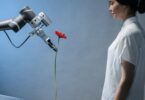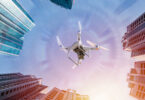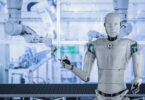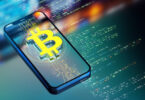The Internet of Things (IoT): Connecting the Dots in a Smart World
In the era of digital transformation, the Internet of Things (IoT) has emerged as a revolutionary force, interconnecting devices, systems, and people in ways that were once only imaginable in science fiction. The IoT, often referred to as the “Internet of Everything,” represents a paradigm shift where everyday objects become intelligent, capable of sensing, communicating, and acting on data. As we navigate the intricacies of a smart world, the IoT is not just connecting devices; it is connecting the dots across industries, transforming how we live, work, and interact with the world around us.
The Essence of IoT
At its core, the Internet of Things refers to the network of physical objects embedded with sensors, actuators, and connectivity, enabling them to collect and exchange data. These objects, or “things,” can range from everyday devices like smartphones and wearables to industrial machinery, vehicles, and even household appliances. The IoT ecosystem encompasses the seamless flow of information between these connected entities, creating a web of interactivity that transcends traditional boundaries.
- Sensors and Data Collection: The foundation of the IoT lies in sensors that gather information from the physical world. These sensors can detect everything from temperature and humidity to motion and light, converting real-world phenomena into digital data.
- Connectivity: The ability of IoT devices to communicate with each other and central systems is facilitated by various connectivity technologies, including Wi-Fi, Bluetooth, cellular networks, and Low Power Wide Area Networks (LPWAN). This connectivity allows for real-time data exchange and remote control of devices.
- Data Processing and Analysis: The data collected by IoT devices is processed and analyzed to extract meaningful insights. Cloud computing and edge computing play crucial roles in managing the vast amounts of data generated by the IoT, enabling efficient storage, processing, and analysis.
- Actuators and Automation: Beyond data collection, IoT devices often include actuators that allow them to perform actions based on the analyzed data. This capability enables automation, where devices can respond to changing conditions or trigger predefined actions without direct human intervention.
Transforming Industries
The impact of the Internet of Things extends across diverse industries, ushering in a new era of efficiency, optimization, and innovation. The transformative power of the IoT can be observed in several key sectors:
- Smart Cities: In the context of urban development, IoT technologies are instrumental in creating smart cities. Connected sensors and devices monitor traffic flow, optimize energy usage, manage waste disposal, and enhance public safety. Smart city initiatives leverage IoT to improve the quality of life for residents and make urban infrastructure more sustainable.
- Healthcare: The IoT is revolutionizing healthcare by introducing connected medical devices and wearables. These devices monitor vital signs, track patient health, and enable remote patient monitoring. IoT applications in healthcare extend to smart hospitals, where connected systems enhance efficiency in resource management and patient care.
- Manufacturing (Industry 4.0): The convergence of IoT with manufacturing has given rise to Industry 4.0, characterized by smart factories and connected production systems. IoT-enabled sensors on machinery gather real-time data, optimizing production processes, predicting maintenance needs, and reducing downtime. This connectivity enhances overall efficiency and productivity in manufacturing.
- Agriculture (Smart Farming): In agriculture, IoT technologies are employed for precision farming, known as smart farming. Sensors in the field collect data on soil moisture, temperature, and crop health. This information, coupled with data analytics, enables farmers to make informed decisions about irrigation, fertilization, and pest control, leading to increased crop yields and resource efficiency.
Enhancing Everyday Life
The integration of IoT into our daily lives is increasingly seamless, enhancing convenience, safety, and efficiency. From smart homes to connected vehicles, IoT applications have become an integral part of our everyday experiences:
- Smart Homes: IoT devices in smart homes include smart thermostats, lighting systems, security cameras, and voice-activated assistants. These interconnected devices enable homeowners to control and monitor their environment remotely, creating personalized and energy-efficient living spaces.
- Wearable Technology: Wearables, such as fitness trackers and smartwatches, exemplify the IoT’s impact on personal well-being. These devices collect health-related data, track physical activity, and provide real-time feedback to users. The data generated contributes to a holistic understanding of an individual’s health and lifestyle.
- Connected Vehicles: The automotive industry has embraced IoT to create connected vehicles equipped with sensors, GPS, and communication modules. Connected cars can provide real-time navigation, optimize fuel efficiency, and enhance safety through features like collision avoidance systems and automatic emergency response.
- Smart Retail: In retail, IoT applications include inventory management, supply chain optimization, and enhancing the customer shopping experience. RFID tags and sensors track merchandise, analyze consumer behavior, and facilitate seamless transactions, creating a more efficient and personalized retail environment.
IoT Security and Privacy Considerations
While the IoT brings immense benefits, it also introduces challenges related to security and privacy. The interconnected nature of IoT devices creates potential vulnerabilities that malicious actors could exploit. Addressing these challenges is essential to ensure the trustworthiness of IoT ecosystems:
- Device Security: Many IoT devices, especially those designed for consumer use, may have limited security features. Ensuring that devices have robust security measures, such as secure authentication and encryption, is crucial to prevent unauthorized access and data breaches.
- Data Encryption and Privacy Policies: As sensitive data is transmitted between IoT devices and cloud services, encryption is essential to protect against interception. Clear privacy policies and user consent mechanisms are equally important to address concerns related to the collection and use of personal information.
- Regular Software Updates: IoT devices, like any technology, may have vulnerabilities that are discovered over time. Regular software updates and patch management are vital to address known vulnerabilities and enhance the overall security of IoT systems.
- Network Security: Securing the networks that connect IoT devices is fundamental. Implementing firewalls, intrusion detection systems, and secure communication protocols helps protect against unauthorized access and potential cyber attacks.
Future Trends and Challenges
As the Internet of Things continues to evolve, several trends and challenges shape its trajectory:
- 5G Connectivity: The rollout of 5G networks enhances the capabilities of IoT by providing faster and more reliable connectivity. This enables real-time communication, reduces latency, and supports a higher density of connected devices.
- Edge Computing: Edge computing, where data processing occurs closer to the source of data rather than in centralized cloud servers, is gaining prominence in IoT deployments. This approach reduces latency, enhances privacy, and enables more efficient use of network bandwidth.
- Artificial Intelligence Integration: The integration of AI with IoT amplifies the capabilities of connected devices. AI algorithms can analyze vast amounts of IoT-generated data, extract meaningful insights, and enable more sophisticated automation and decision-making.
- Interoperability Standards: The diversity of IoT devices from various manufacturers underscores the need for interoperability standards. Establishing common standards ensures that different devices can seamlessly communicate and work together, fostering a more cohesive and efficient IoT ecosystem.
- Sustainability and Energy Efficiency: As the number of connected devices proliferates, considerations for sustainability and energy efficiency become increasingly important. IoT solutions must aim to minimize environmental impact and promote responsible resource usage.







[…] Safeguarding this sensitive information is paramount to maintaining public trust and ensuring ethical practices in biotech […]